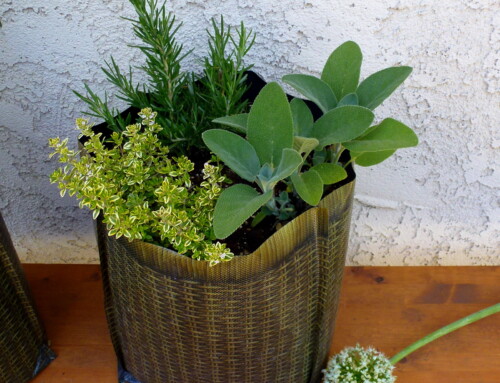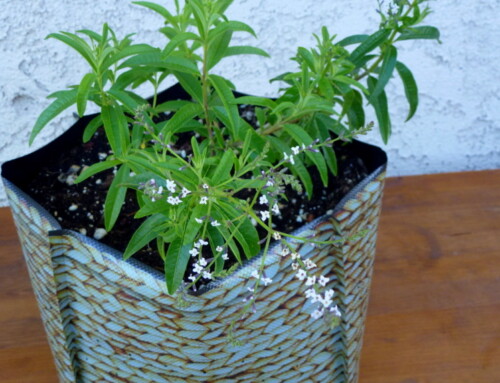Wisteria Riddle
- Wisteria trellis at Rengeji-ike park
From Wikipedia: Wisteria (also spelled Wistaria) is a genus of flowering plants in the pea family, Fabaceae, that includes ten species of woody climbing vines native to the eastern United States and to China, Korea, and Japan. Aquarists refer to the species Hygrophila difformis, in the family Acanthaceae, as Water Wisteria. Some species are popular ornamental plants, especially in China and Japan.
We have a wisteria; surely one of the largest and finest in the County. It was here when I moved in with an earlier wife and life, back in 1976.
This wisteria grows at the northeast corner of our garage, where the carport attaches along the north wall of the garage. It is a truly beautiful and fragrantly-flowered vine with a thick trunk, comprised of multiple limbs twined around one another and branches now trained mostly on a large arbor. I say trained, but you don’t train wisterias very easily or for very long. The truth is, this wisteria is a lot of trouble and threatens to bring down the garage.
We have suffered all sorts of trouble with roof damage, clogged rain gutters, and even vines growing through cracks into the garage and clear across the full length of the carport roof – – – all for the sake of protecting and preserving its wonderful beauty. The long trains of lavender leguminous flowers are truly magnificent to the eye and heavenly to the nose of any passerby. It could bloom unpredictably two or three times a year, adding to its charm and mystique.
The wisteria was relatively well-behaved for a long while. Yes, I had to whack off the hanging limbs (vines?) several times a year to keep from running into them. Each time I would say to myself, it seems like I just did that. Then one day a “friend” of mine decided, in my absence, that the wisteria needed a severe shearing and took off a lot of limb ends. They didn’t really need it, but this was an expert.
Then, another day, a high wind came up and toppled the upper half of the wisteria off the carport and onto the driveway. Using a rope, I had to hoist it back up onto the carport, but I didn’t pay much attention to exactly how and where the main limbs had been supported on the roof. Eventually I removed the rope that was holding it up. Because of some weight imbalance, the trunk, imperceptibly over time, bent and bowed out of position, with the result that the canopy threatened to all come down again. I had trouble. The trunk could not be unbent.
Eventually, using a small crew, scaffolding, a couple of old-style jacks and timbers for wedging in various ways, we managed to pry the canopy somewhat back into position, but we couldn’t quite get the bends all back into position and supported on the roof. Consequently, I came up with a scheme for a large and long arbor that would allow transferring the canopy weight off the carport roof onto the arbor and also prop up awkwardly angled major limbs. It worked, sort of, but we still had problems with sprawling limbs and falling leaves tending to block the rain gutter on the garage. But the troubles are not the point of this story.
This is a very old wisteria. Visitors to a garage sale several years ago told us they were on hand in 1943 when the previous owners, the Meyers, planted it. I was a toddler at the time. A beautiful, ancient plant of this sort warrants some expense and trouble to keep it going. But how it has kept going through serious freezes and manhandling is remarkable. Still more remarkable is that it grows at all. It defies the rules.
Supposedly plants, such as trees, can not survive having their root-spread covered by impervious surfaces that deny oxygen to the roots. This wisteria is almost completely surrounded by extensive concrete pads. In addition to the garage floor and driveway, there is the pad for the carport that was added onto the garage and a more recent pad beyond added for parking. The only space not covered in concrete is a narrow strip of ground about 2 feet wide running between the garage and carport floors.
By all rights this wisteria should have been dead long ago, but nothing seems to stop it. Earthquakes have cracked the concrete pads in several places. In the winter of 2010 we had a very severe and sudden deep freeze that looked like it had killed the wisteria. A lot of limbs were killed, but it came back.
No doubt our majestic wisteria has put roots out beyond the concrete pads to the north and the west. It must have in order to get water and nutrients, but it is amazing that it thrives with concrete covering more than half its probable root-spread area to the east and south. How does it do this with there being only a small amount of fertilizer applied (fish and kelp) and receiving very little water at its base? We always have to be alert to exceptions that violate the rules. Have I told you about our incredible (and likewise abused) old walnut tree?
GK
P.S. – I’ve got another one about funny birds. Gardeners like birds, right? Maybe I’ll do that one next. What do you think?
Reminder – The 2012 South Sound Food Gardener’s Calendar is in our store and it’s beautiful, if we have to say so, ourselves. Come get it before it’s February, already.
© 2012 Gary L. Kline
All Rights Reserved
Reprinted with permission







